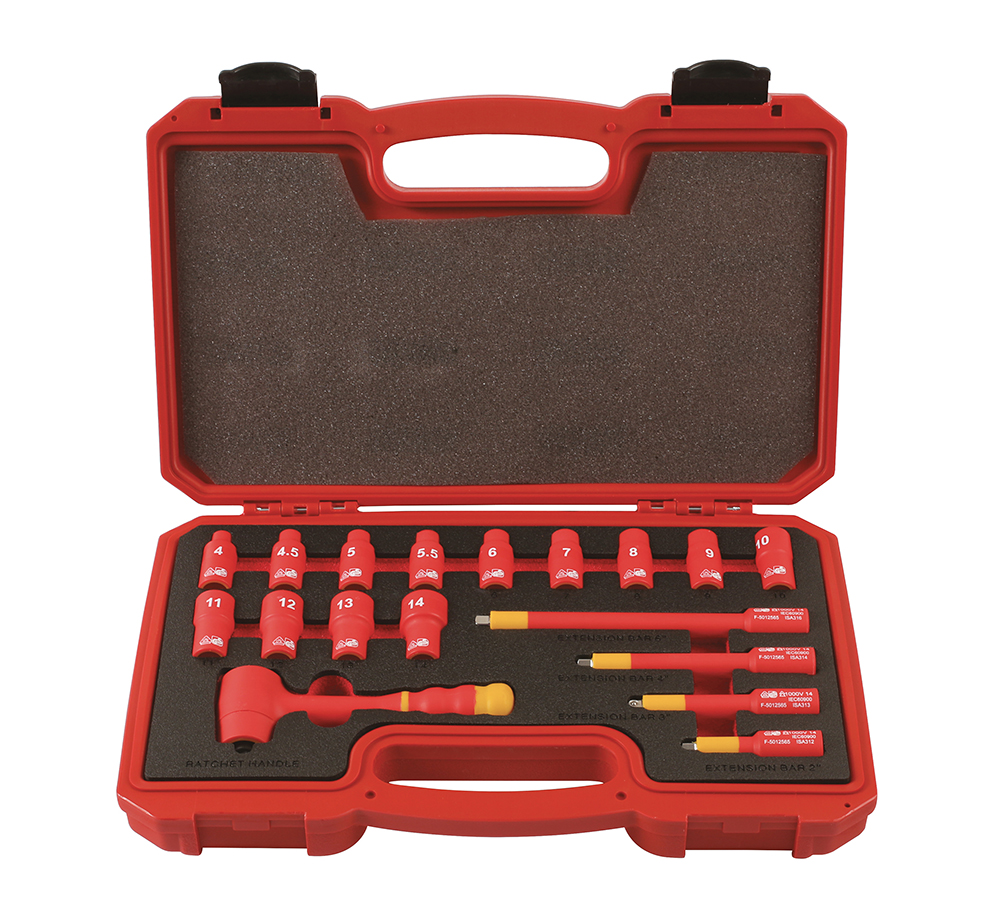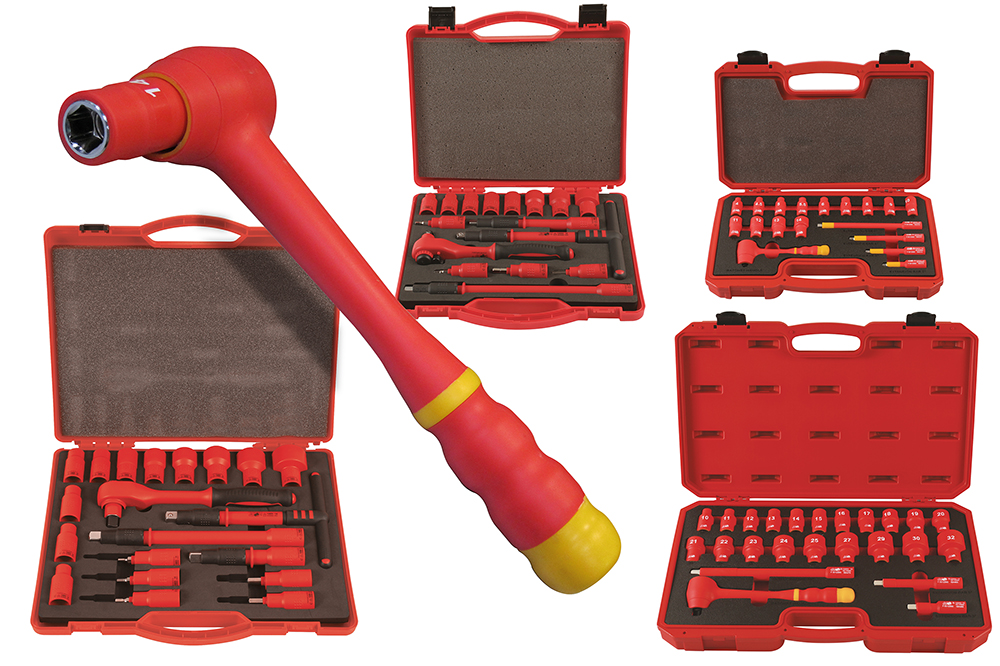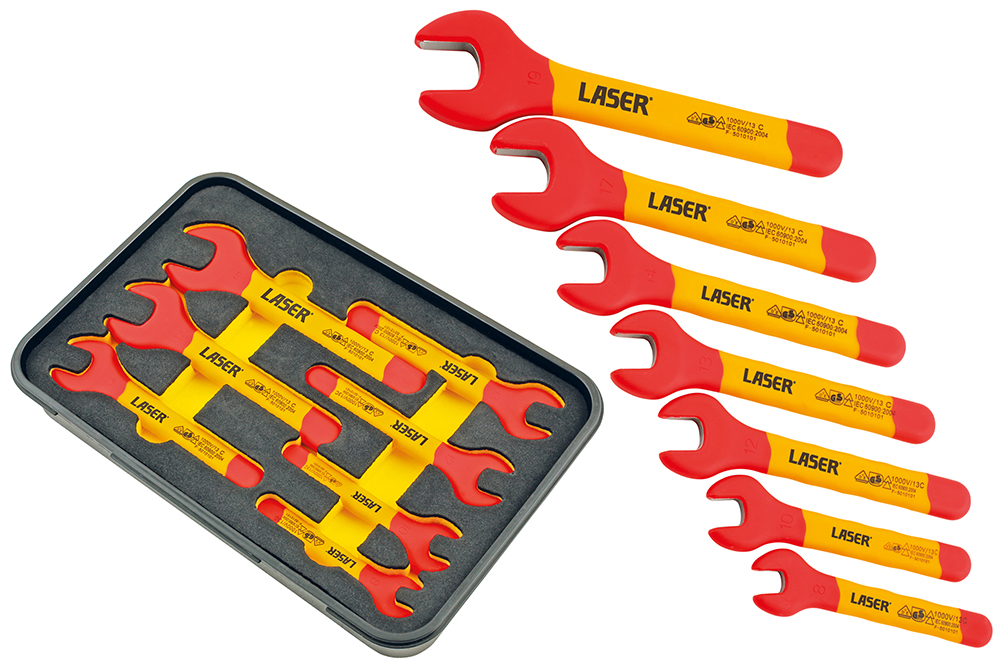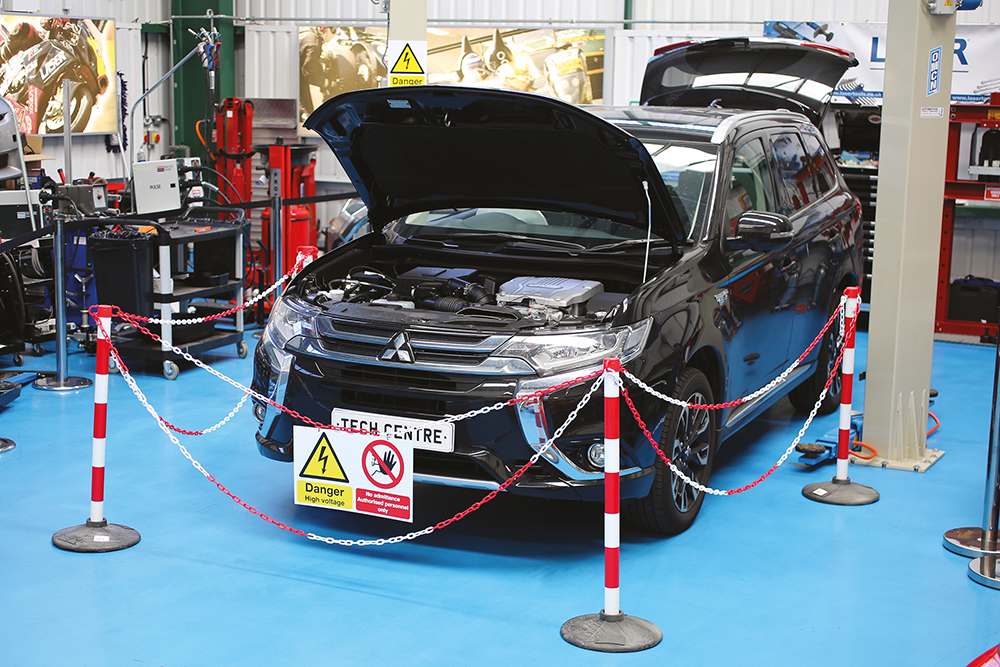
Hybrid and Battery Electric Vehicle Workshop Safety
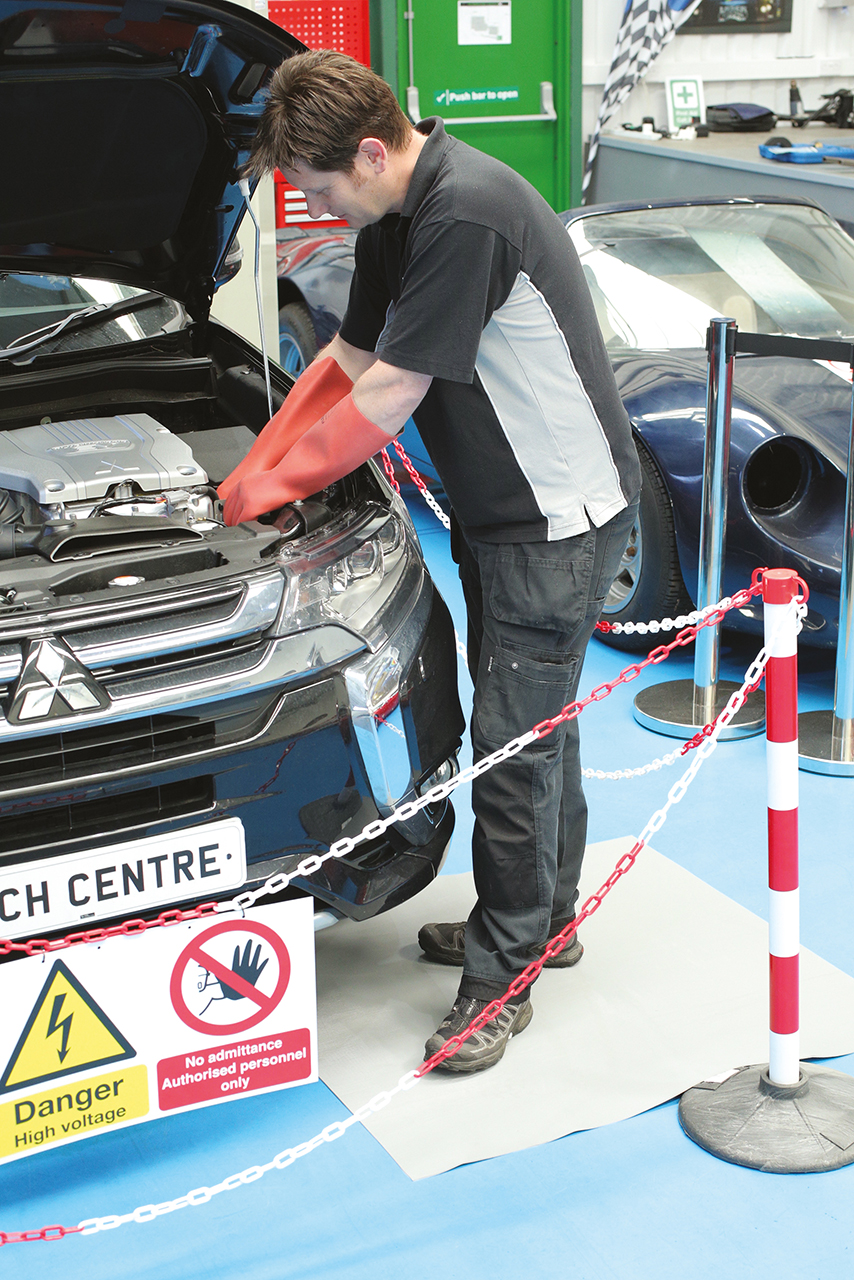
Hybrid and BEV (battery electric vehicles) commonly operate with battery voltages typically from 300v DC to 600v DC — anything beyond 60v DC is classed by H&S as ‘high-risk’ and can cause serious injury or even fatalities.
When we consider workshop safety concerns it is important to look at the whole picture and subdivide ‘hybrid and BEV safety’ into four separate categories:
- Workshop safety - https://www.lasertools.co.uk/products/Hybrid--Electric-Vehicles/Hybrid-Safety
- Vehicle safety - https://www.lasertools.co.uk/products/Hybrid--Electric-Vehicles/Vehicle-Safety
- Personal safety - https://www.lasertools.co.uk/products/Hybrid--Electric-Vehicles/Personal-Protection
- High voltage tools and test equipment - https://www.lasertools.co.uk/products/Hybrid--Electric-Vehicles/Insulated-Tools
Workshop Safety is about making the working environment safe — for employees, but also for members of the public/customers who may be around vehicles in the workshop. It is important that there should be a designated area cordoned off and identified as a ‘Danger - High Voltage’ area, with appropriate barriers and signage. It is also important that high-voltage rescue and first-aid equipment be available in case of emergency.
Vehicle Safety is about making the vehicle safe for a technician to work on. PHEVs (Plug-in Electric Vehicles) and BEVs will normally have some form of ‘Isolator’ switch, commonly known as an MSD (manual service disconnect) switch, which should be removed before any work is carried out on the vehicle. This has the effect of isolating the high voltage battery from the rest of the vehicle. However, it is important that other technicians in the workshop are aware that this is a high voltage vehicle, and do not attempt to start, or move the vehicle. Thus appropriate identification, (for example, warning signage, locks, etc) should be used.
The MSD should also be stored in a secure location, to avoid the risk of someone accidently re-fitting it while a technician is working on the vehicle. Once the MSD has been removed, the high voltage will take some time to dissipate — use of an appropriate ‘Voltage Absence’ tester to verify lack of voltage is essential before commencing any work, along with appropriate insulating materials to protect the high voltage circuits.
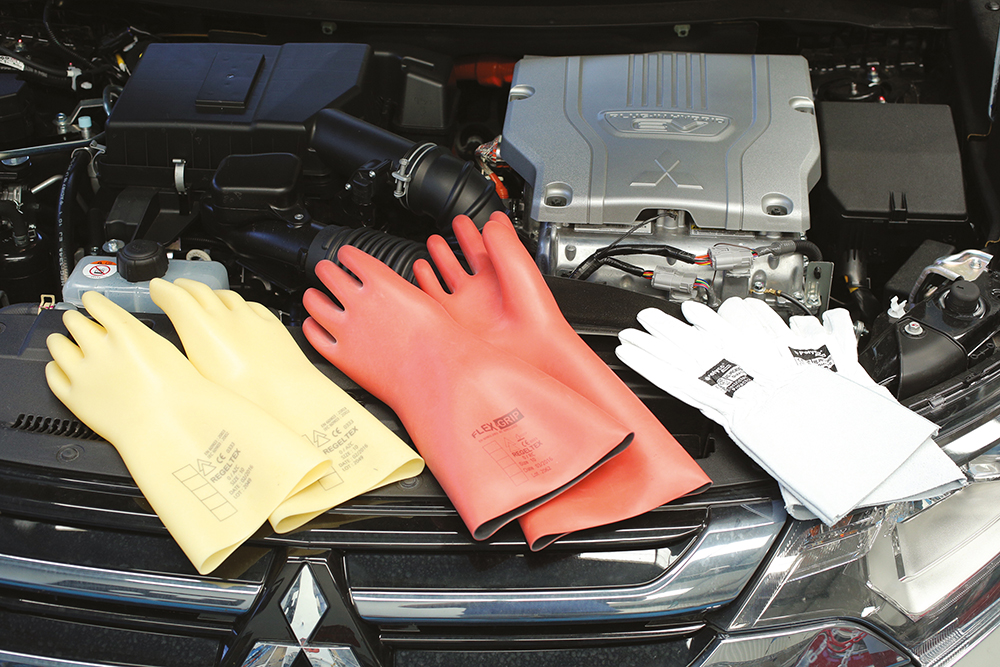
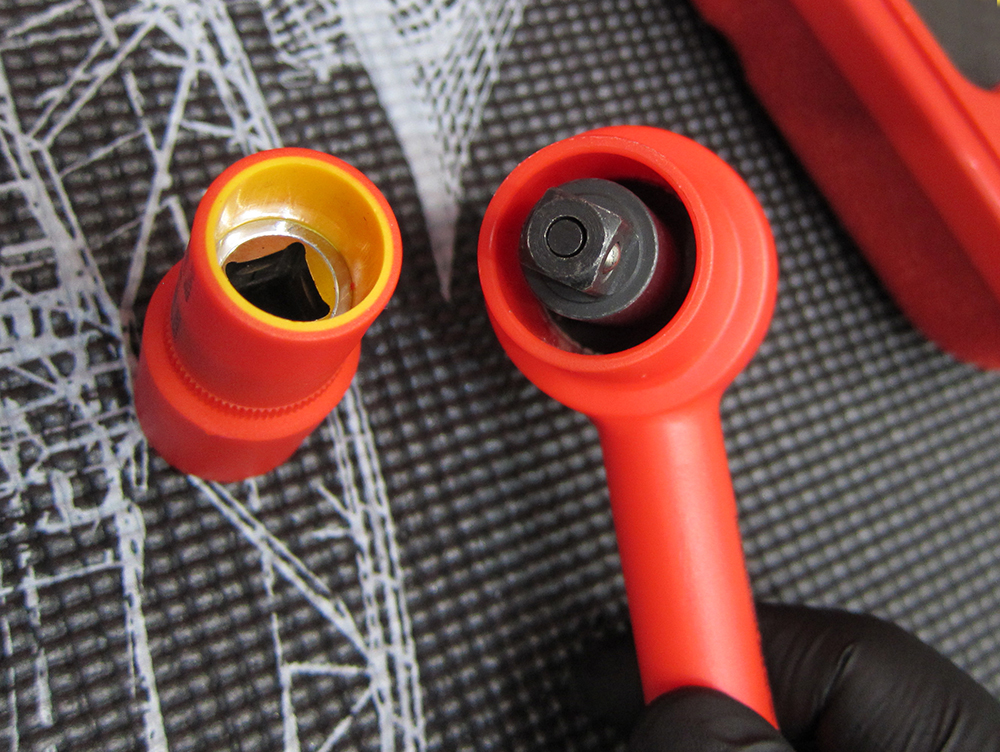
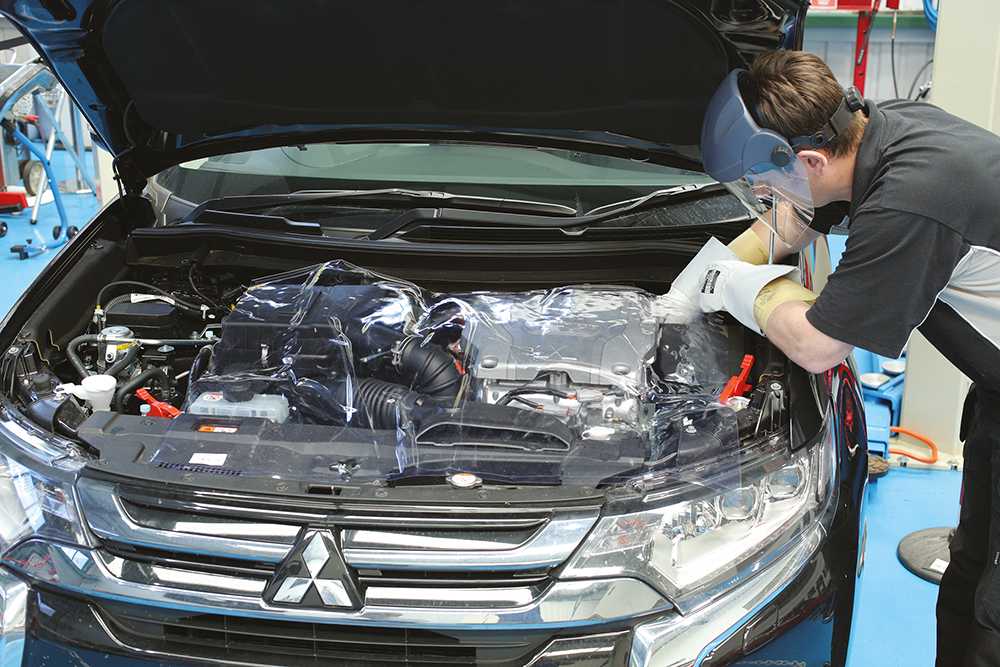
Personal Safety is about providing protection for the technician working on the vehicle — appropriate insulated gloves and face shield should be worn to protect against high voltage leaks and arc flash risk. If working within the high voltage battery and/or circuitry, further specialist protection may be necessary as the technician will now be working within a live high voltage environment.
High Voltage Tools and Equipment — the electrical industry has specific standards for test equipment which is to be used in a high voltage environment. This is known as the CAT standard, a minimum of CAT III 600v, or CAT IV 1000v is required to ensure the test tools are suitable and safe for working on high voltage systems.
Hand tools are required to be fully tested and insulated to IEC 60900:2012 standards, and carry the international symbols for High Voltage Tools. Typical tools required will include socket sets, wrenches, screwdrivers, torque tools and hex and Torx keys — although most vehicle manufacturers will only use a limited selection of sizes of each.
Everything is about ensuring the safety of technicians, employees and customers. Even if correct vehicle manufacturer procedures are followed, there is still risk — remember the vehicle may be in the workshop because of a fault or an accident, therefore nothing can be assumed — safety is paramount.
A wide variety of training programmes from different training providers are available — suitable for the type of work a business may be involved in — from car sales/valeting, vehicle recovery, basic servicing, to in-depth diagnostic work. It is important to select the correct type of training for the business, which may require more than one type of programme. A good training programme will cover not just the operational and component aspects of a high voltage vehicle, but also the safety aspects and advise appropriate tools and equipment.
Laser Tools has approached the subject on the basis of offering a ‘one-stop-shop’ for workshop high voltage vehicle requirements, covering all aspects of workshop safety, vehicle safety, personal safety, and appropriate tools and equipment. In order to make it easier for the workshop owner to decide on basic requirements, Laser Tools has created a number of starter packs:
- the Workshop Safety Pack (part number 6769) includes high voltage floor matting, an insulated rescue pole, high voltage/no admittance sign, danger – high voltage sign and a set of four barrier posts and bases, together with 25 metres of chain.
- the Vehicle Safety Pack (part number 6770) includes two 1000V insulated safety clamps, a 1.4m x 1.0m transparent safety shroud (1000V rated), a steering wheel lockout cover, a nylon-bodied safety lockout padlock, a Do Not Start safety tag and a set of three (15, 15, 35mm) insulating shrouds for covering the ends of disconnected leads.
- the Personal Safety Pack (part number 6771) consists of a protective arc-flash face shield, a carrying bag for the face shield, and an insulated glove set.
- the Safety Tools Pack (part number 6772) includes a CAT III multimeter and high voltage insulation tester, a 25 piece 3/8" drive insulated socket and tool set, a 6 piece VDE extra-long hex key set and a 9 piece VDE star key set.
Plus Laser Tools offers a comprehensive range of GS and VDE certificated high voltage insulated tools from socket sets and torque wrenches to spanners and screwdrivers. The range also includes high voltage testers, clamp meters and insulation testers.
The company has gained invaluable experience by working with vehicle manufacturers and importers on the requirements for their main dealer service workshops when working on high voltage vehicles. This includes both normal service functions and specialist high voltage work. This experience has allowed Laser Tools to create suitable packages for independent workshops, and to pass on the knowledge they have gained.
Useful links:
http://www.hse.gov.uk/mvr/topics/electric-hybrid.htmhttp://accreditation.theimi.org.uk/electric-vehicle-route
